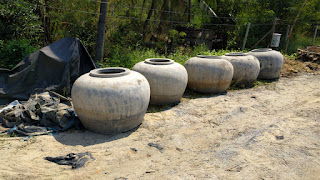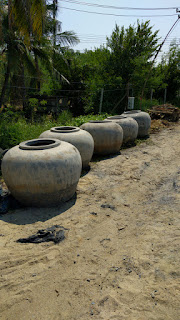I’ve been wanting to try experimenting with slow sand filtration of water for some time now. A quick Google search on “slow sand filter” yields interesting pages from the CDC, the WHO, Wikipedia, and a site with a wealth of information on the subject at biosandfilter.org and slowsandfilter.org
They all agree that slow sand filtration is a very effective and easy way to filter water up to even potable levels of quality. The WHO link above opens with the following statement:
Under suitable circumstances, slow sand filtration may be not only the cheapest and simplest but also the most efficient method of water treatment. Its advantages have been proved in practice over a long period, and it is still the chosen method of water purification in certain highly industrialized cities as well as in rural areas mid small communities. It has the great advantage over other methods that it makes better use of the local skills and materials available in developing countries, and it is far more efficient than rapid filtration in removing bacterial contamination.
Quite compelling stuff. I’ve been quite busy with a lot of other projects going, but I’ve been hoping to wrap up the electrical wiring of the first house (BaanMae) and the construction of the driveway, parking area and walkways around BaanMae very soon, so I’ve begun thinking about how to proceed with experimentation on slow sand filtration.
There are many purposes I’m hoping to use them for:
- The biofiltration pond we are building is really a giant slow sand filter. A smaller slow sand filter might help me learn more about how the giant pond filters work and even do some small experiments on different conditions (sunny, shady, slightly brackish water, etc.).
- The rainwater coming off of the various roofs likely contain a little bit of E. coli bacteria from bird and gecko droppings, so passing roof runoff through a small slow sand filter before using it for watering gardens, etc. ought to be enough to reduce the chance of getting E. coli from our fresh vegetables.
- The complex bacteria layer that forms at the top of a properly established slow sand filter basically consumes large percentages of bacteria, viruses, and nutrients in the water. (Percentages in the high 90’s.) Since the goal of the biofiltration of the pond is to purify the water to the point where there aren’t enough nutrients for algae and bacteria to grow, passing the water through a slow sand filter may be another process by which organic compounds can be removed from the pond water.
- During the dry season, it may be that the evaporation of the pond water is enough to reduce the level quite substantially. Since house #3 (BaanLoiNaam) is floating on the pond, if the water level drops too low it could be problematic. While we have canals on two sides of our property, the canal water is pretty foul stuff. It doesn’t move very much in the dry season, and some of the nearby houses are probably dumping the effluent output of their septic tanks directly into the canals. If slow sand filters can make canal water potable, they should be able to make it suitable for refilling our pond. This is the most risky of all the applications, so I wouldn’t do it until I’ve tested the input and output water at a professional water testing lab a number of times.

